Whether you’re a bluewater afficionado, a Northeast surfman, or a hardcore flats junkie, the ability to consistently find fish is unquestionably your most important fishing skill. For flats anglers who visually hunt their quarry, this skill is elevated an order of magnitude – to be successful they must be able see their target fish. Anglers who see fish well are able to cast calmly and present their fly sooner, oftentimes with more accuracy. This truth motivates devout flats fishermen to continuously improve their fish spotting ability – its importance cannot be overstated. In this article I share what I’ve learned in over thirty years of flats fishing to help you become consistently successful, regardless where you’re fishing and what game fish you seek.
Is Fish Spotting Ability Acquired or Innate?
Are we born with fish spotting ability, or is it a learned skill? I believe it is both. Not everyone has 20-20 vision, but I’m convinced that spotting fish is less about vision acuity than it is your ability to discern contrast, shades of gray, and movement. If it was just acuity, we’d all acquire great flats vision with a simple pair of prescription glasses.
Our eyes possess unique features called photoreceptors (located on the retina) that process incoming imagery – cones, which enable color perception, and rods, which are essentially lightness / darkness sensors. Rods typically outnumber cones by about 4 to 1 and they allow us to discern contrast. I believe some folks have more rods than other people, enabling greater ability to discern shades of gray, contrast, shadows and movement on the flats. Just as with vision acuity, we are not all the same. Over the years I’ve noticed that people with great night vision can distinguish shades of gray very well and inherently see fish better on the flats.
Most anglers new to the flats don’t know what they’re really looking for – they must learn the “ques” and how they will appear in differing light and water conditions . . . we train our minds to recognize signs of fish and other indications of their presence. This takes time and practice. The same is true for your ability to sense movement, which is critical in distinguishing fish from fishy-looking inanimate objects (like rocks and sticks). Similar to dry-fly anglers who learn to acutely sense drag in their presentations, flats anglers master their ability to recognize subtle shadow movement.
Fundamentals of Spotting Fish
Fish are spotted in several ways. The manner in which they’re operating on the flat, water levels, available viewing light and wind collectively determine the ques anglers rely on to see their quarry. Time on the water and experience are invaluable in assessing the right ques to look for.
Some newcomers mistakenly look for actual fish – like what you might observe in an aquarium or goldfish pond.

Somedays, when you have great light, zero glare, and very little wind, you can actually see them like that. But most days you’re looking for signs or suggestions of fish, not the actual fish themselves. These “signs” may be classified as 1) surface ques revealed on the water’s surface, and 2) subsurface ques observed beneath the surface.
– Surface Ques
Perhaps the most dramatic visual que is tailing fish. Fish “tail” when feeding in water that’s so shallow that a mere downward tilt of the fish’s head toward the bottom raises the upper lobe of the tail into plain view above the surface (often visible at great distance, especially when flickering in bright sun). Bonefish are best known for this behavior, as they routinely feed in very shallow water. However, permit, redfish, striped bass and other larger flats species, may also tail, despite feeding in deeper water. Casting to tailing fish is thrilling and it’s regarded by many to be one of the great highlights of outdoor sports.

“Pushes” and “wakes” are exciting visuals, as well. Here, cruising game fish reveal themselves while roaming shallow flats in a normal horizontal posture, but their proximity to the surface creates a bulge of water just ahead of them – a push – that’s readily spotted, particularly in calm conditions. When fish are cruising a bit deeper, the push may materialize further back and the term “wake” is used instead. In either case, the actual fish are not visible, but in contrast to stationary tailers, they are moving and savvy anglers wisely lead them by presenting the fly about a rod’s length ahead of the push or wake they observe (which actually appears closer to the tail).
Nervous water is another phenomenon that indicates fish – it’s created when a school of fish travels very near the surface causing it to appear ruffled or choppy relative to the water around it. Schools of non-feeding fish traversing the flat near the surface often reveal themselves by the nervous water they create – migrating tarpon are a prime example. But other schooling fish, such as bonefish or striped bass, may reveal themselves with nervous water, too.

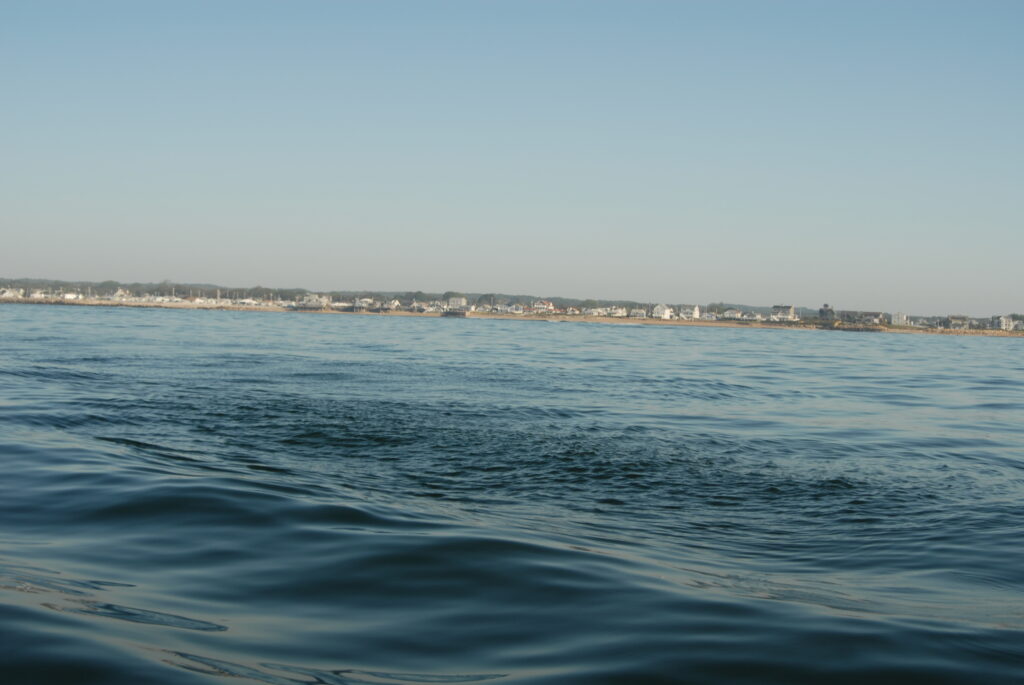
– Subsurface Ques
While surface ques are exciting and relatively easy to spot, they typically prevail only under certain conditions (calm wind, very shallow feeding, low light, etc.) making them not as reliable as subsurface ques, which day-in and day-out reveal far more fish.
Most shallow water game fish are remarkably inconspicuous on the flats. Their highly reflective silvery sides mirror the water and bottom that surrounds them and what coloration they do possess adjusts to suit their environment enabling further concealment. Sometimes fish may only be detected by spotting specific features unique to that species – the stark black pupil of a nearby bonefish, the distinctive dark outline of a permit’s tail, etc. But these phantoms do have an Achilles heel – their shadow, which is cast on the bottom, regardless how well they’re camouflaged. Shadows are stark and conspicuous in bright sunlight, but become faint and less defined with diminishing light, requiring a focused effort to see them.
Anglers must determine if what they observe is a shadow or some inanimate bottom feature, such as a rock or streak of dark sediment (surface wavelets can make even a submerged Heineken bottle appear alive). Movement is the key to making this determination. Very rarely do fish lay motionless on the flats. Tarpon sometimes layup and permit may loaf on top, but their dorsals and tails usually protrude the surface simplifying the assessment. Barracuda can be very tough to spot, as they often lay motionless with nothing breaking the surface. But striped bass, bonefish, redfish and most other mainstream flats fish move constantly and anglers should concentrate on movement when scanning for fish. Using fixed objects on the bottom (rocks, for example) as references facilitates sensing relative movement of suspect shadows and is effective for making this determination. Generally, fish feed into the tide to capitalize on the stream of scent information flowing in the current so any shadows advancing against the current are almost certainly fish.
Shadows reveal valuable information. Most relevant is the depth at which the fish are operating. For example, fish meandering very near the bottom cast a minimal shadow that’s barely separated from the fish itself. These fish will likely want a fly presented right on the bottom.
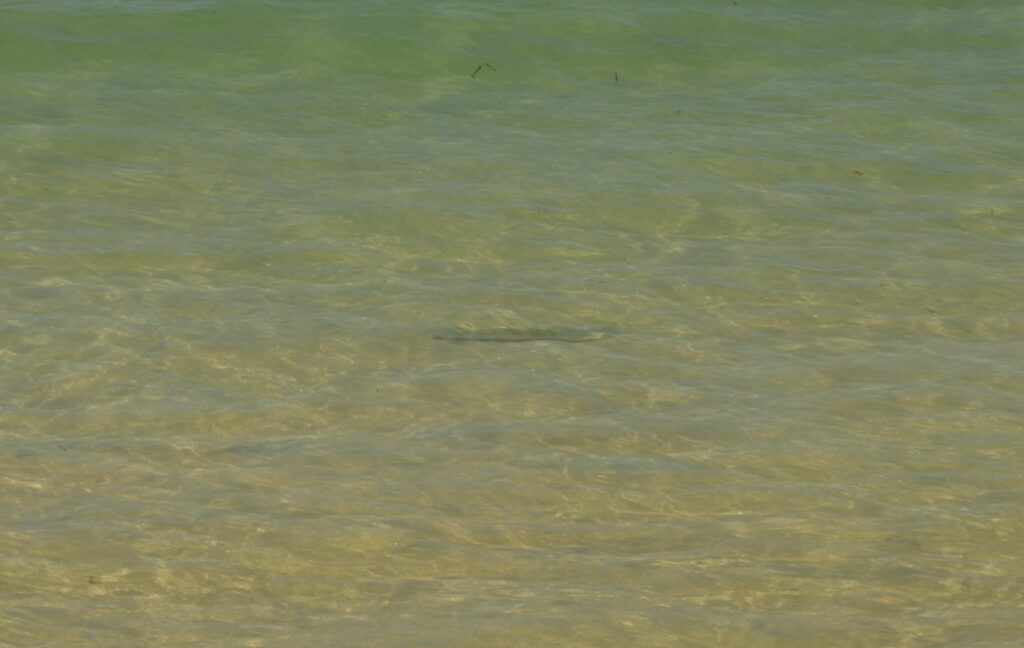
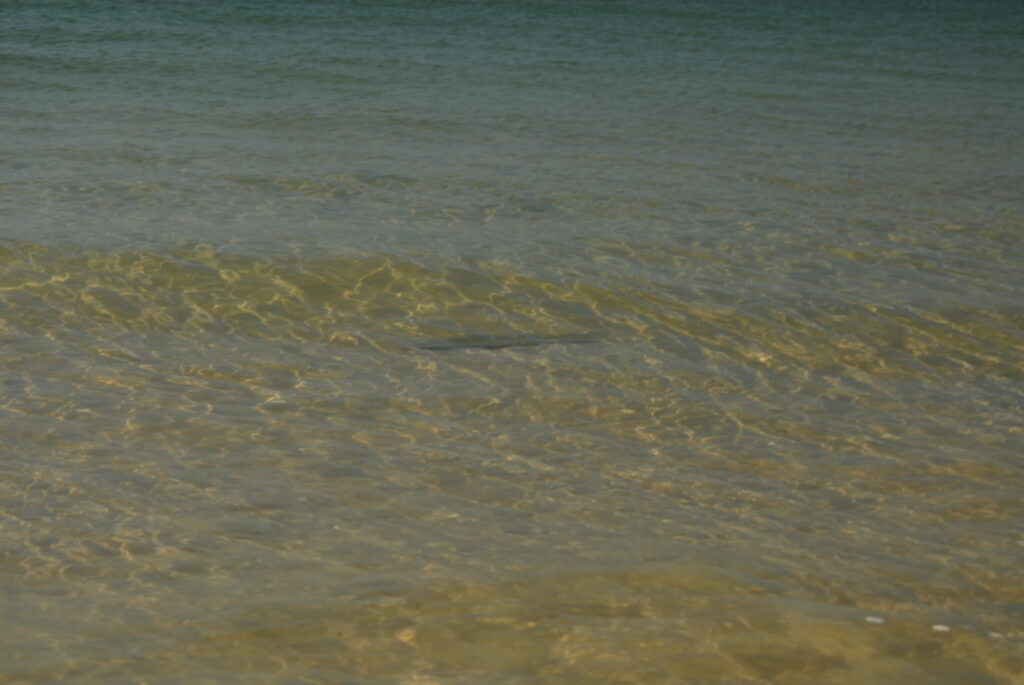
Fish advancing at mid-depth or near the surface will cast a vibrant shadow that’s vertically separated from the fish itself. The fish also become more visible when swimming high in the water column. These fish are likely hunting upper water prey, such as baitfish, and will respond best to flies presented higher in the water column.
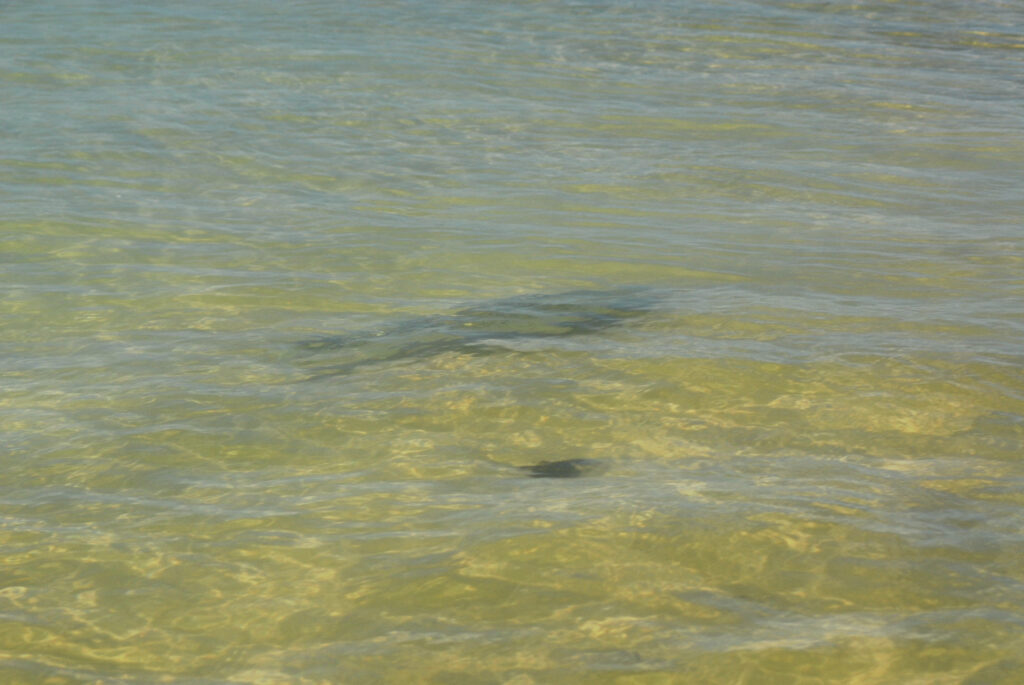
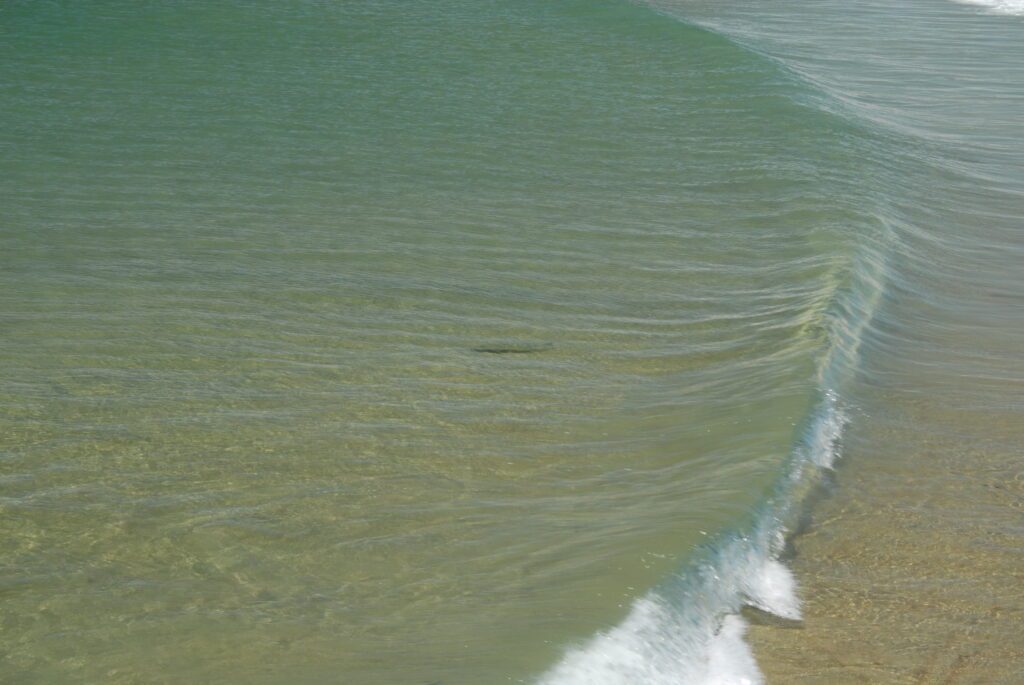
With weak light due to clouds or haze, or with turbid water, shadows become more difficult to detect. But some fish twist and roll as they feed, radiating flashes that betray their location. These flashes are often observable beyond normal casting distances and can effectively lead you to fish. Bonefish commonly reveal themselves in this manner, but try to determine the edge of the school and present your fly there rather than plopping it in the middle of them, which could spook the whole school. Lone fish flash, too – striped bass and permit are known for this behavior. Due to their size, their flashes allow you to spot them at great distances.
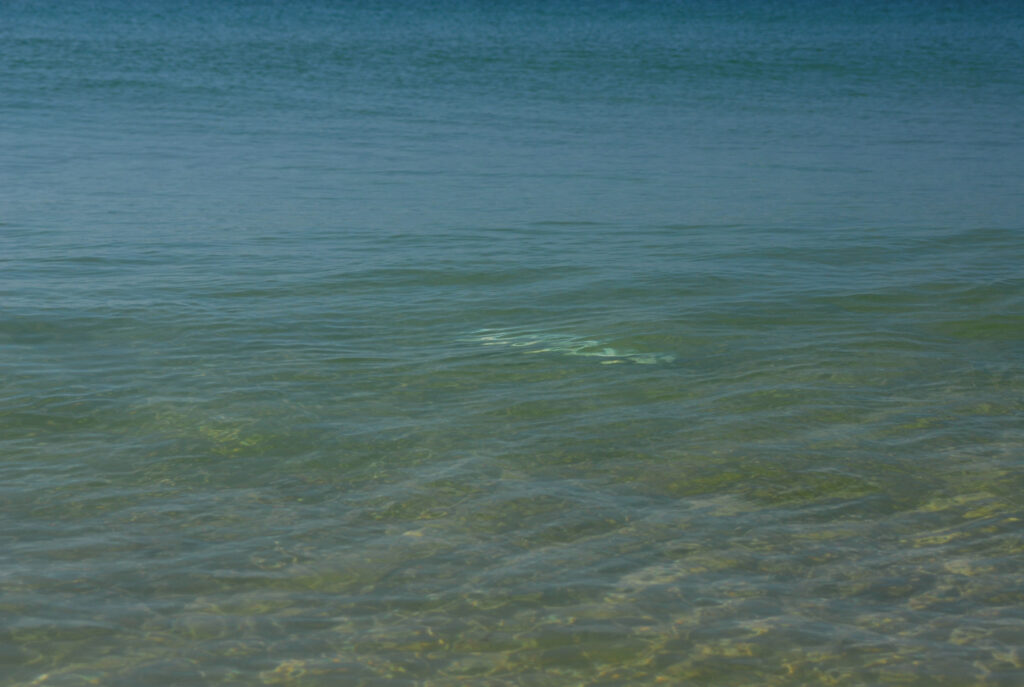

Groups of fish feeding on prey-rich patches of the bottom disclose their whereabouts in another conspicuous fashion – mudding. A “mud” is a hazy, often opaque plume of waterborne sediment thar disperses down-current with the tide. Murky muds materialize within otherwise clear water when several fish stir up soft sediment as they feed in close proximity to one another on the bottom. Muds enable anglers to find fish even with lousy spotting conditions and no surface ques to work with. They’re often observed on deep flats and are easily spotted even at great distance, similar to flashing fish. The murkiness and depth of an active mud occludes the ability to present to visible targets and “flock shooting” the mud becomes the best approach (fish become much less spooky in deep, cloudy muds). The up-tide edge of the mud plume logically reveals where the fish are actively feeding, or have been most recently – anglers should focus their efforts there first.
Enhance Your Ability to See Fish
In his book Trout on a Fly, Lee Wulff notes, “Small boys, sneaking up on trout in small streams, are careful to keep hidden because they’ve learned a simple truth: that if you can see a trout, he can see you . . .” So, if the fish can see you, too, how is sight-fishing even possible? As flats fishing has evolved, tools and techniques have been developed that shift the viewing advantage considerably in the angler’s favor.
– How to Look for Fish
Knowing how to look for your quarry is just as important as knowing what signs to look for. Continuously scanning the water, as opposed to focusing from spot to spot is most important. Look throughout your entire viewing window – which is generally a 90- to 180-degree span looking down-sun (depending on time of day, time of the year, and sun intensity). Not looking beyond the range at which you can perceive fish, nor focusing your attention so close that any opportunity may be too sudden for realistic presentation, are important. With good light, I’ll often look slightly beyond my casting range to be ready for fish as they enter my range. But difficult-to-see shadows are generally best detected within your casting range where you can scan intently for them.
There are exceptions: unseen fish that suddenly appear at close-range are still viable targets, though awkward presentations may be required – a quick roll cast or backhand shortie can consummate these opportunities. When fish are revealing themselves on or near the surface during calm conditions, scanning well beyond your casting range enables you to effectively locate more fish simply by canvassing a larger area. Large high-riding fish, such as migratory tarpon, can readily be spotted beyond your casting range (even while swimming a foot or two below the surface), providing alert anglers a bit more time to plan and execute their cast.
– Sunglasses and Hats
Polarized sunglasses and hats are the tools that nudge the “who sees who first” dilemma to the angler’s favor – both items are vital equipment.
A good hat is just as important as a good pair of glasses. A front brim that casts a shadow over your eyes, allowing your pupils do dilate and let in as much light and subtle contrast from your field of view as possible is key. A dark under-brim (black, navy, gray, etc.) enhances your view remarkably by reducing downward glare from the brim resulting from sunlight reflected up off the water. Ball players use eye black on their cheeks for the same reason and I believe someday anglers fishing in intense tropical sun might use eye black, as well. Keeping in mind that the higher above the water an object is the further away a fish can see it, it’s clear that hat colors should be subdued (grey, tan, olive etc.) to preserve your stealth.
Glasses that eliminate glare while allowing substantial light to enter your eyes are ideal. They should not be dark – a medium to pale tint in the yellow-amber color spectrum is best for flats fishing, as shallow sand, grass, coral and gravel habitats are generally in this color range, too. The fish are often pale and their shadows weak so you’ll want your eyes to receive the maximum amount of glare-free light to perceive these faint images. Yellow and amber filter out other colors in the spectrum and narrow incoming light waves to the colors that matter most on the flats. These colors also enhance contrast to help you detect barely visible fish and their shadows.
I recommend glass lenses, as their optics and durability are worth the extra cost. Frames with eyepieces that “cup” your eye socket are ideal as this design further eliminates glare from reaching your eyes. The comfort, affordability and quality of today’s polycarbonate lenses make them attractive, too, and they’re a great option as backups to more expensive glass products. I carry multiple pairs of glasses to handle varying spotting conditions and to provide backup. I always have light amber and yellow on hand and yellow has become my first choice for all light conditions. Flying Fisherman of Islamorada, Florida markets excellent eyewear for anglers – they offer an extensive product line of inexpensive glasses that perform very well.
– Improve Your Elevation
The higher your eyes are above the water, the better your view will be looking into the water. This is because you receive light at an angle more normal (perpendicular) to the water’s surface, which reduces reflection and glare allowing you to see through the surface better. This is why flats guides operate from an elevated platform (enhanced leverage for poling and a great view of every detail unfolding on the bow are additional benefits). When wading, I take advantage of every opportunity to improve my elevation and enhance my view. Standing on a submerged rock or coral structure, walking a bit higher up the beach face when sight-fishing a shoreline, and even getting up on your tip-toes to gain a mere inch or two of elevation yields noticeable improvement. Some wade anglers and guides augment their viewing advantage with step-stools, ladders and even milk crates – all are quite effective for enhancing your view (milk crates aren’t burdensome to lug about, either).
– Adjust for Backdrop Glare
The basic approach to sight-fishing involves wading or poling a skiff down-sun to ensure a well-lit view as you look for fish with the sun at your back. But scanning directly down-sun does not always produce the most glare-free viewing. There may be puffy white clouds, a cloud bank or a thunderhead reflection casting substantial glare on the water down-sun, marring your view in that direction. By simply adjusting your gaze away from the offending clouds, you can dodge that glare by looking toward a darker blue-sky backdrop slightly to the left or right.
Other dark backdrops, such as high shoreline vegetation (mangrove stands, tall grass, rosa rugosa, etc.), also provide opportunity for glare-free viewing. By wading or poling off the water’s edge while scanning shoreward into a glare-free field of view is a great tactic for spotting fish along dark, vegetated shorelines.
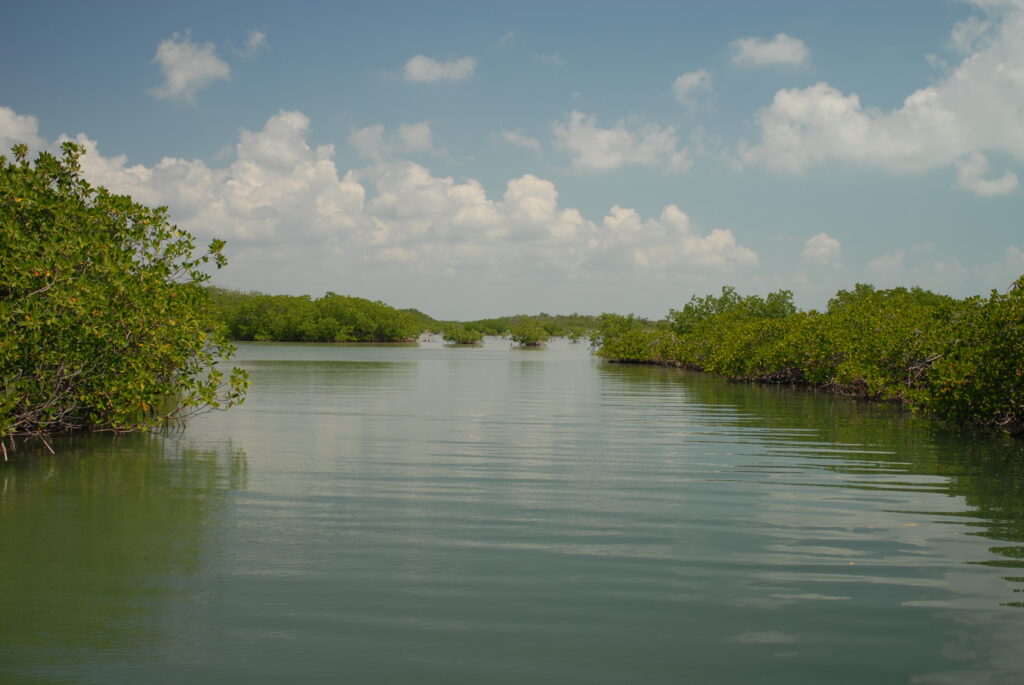
Hone Your Skills
As with all sports, the desire to improve, regular self-assessment and practice will make you a better flats angler. I’m always striving to get better and recommend fishing with experienced anglers and guides to learn from them. A great exercise is to wade while a partner scans the same water from a higher vantage on shore, or from the skiff, to find out how many fish swim by you that you never see. I work continuously to improve by regularly pushing myself to sight-fish in difficult conditions, such as cloudy or hazy days. I’ve even sight-fished in moonlight to sharpen my spotting skills.